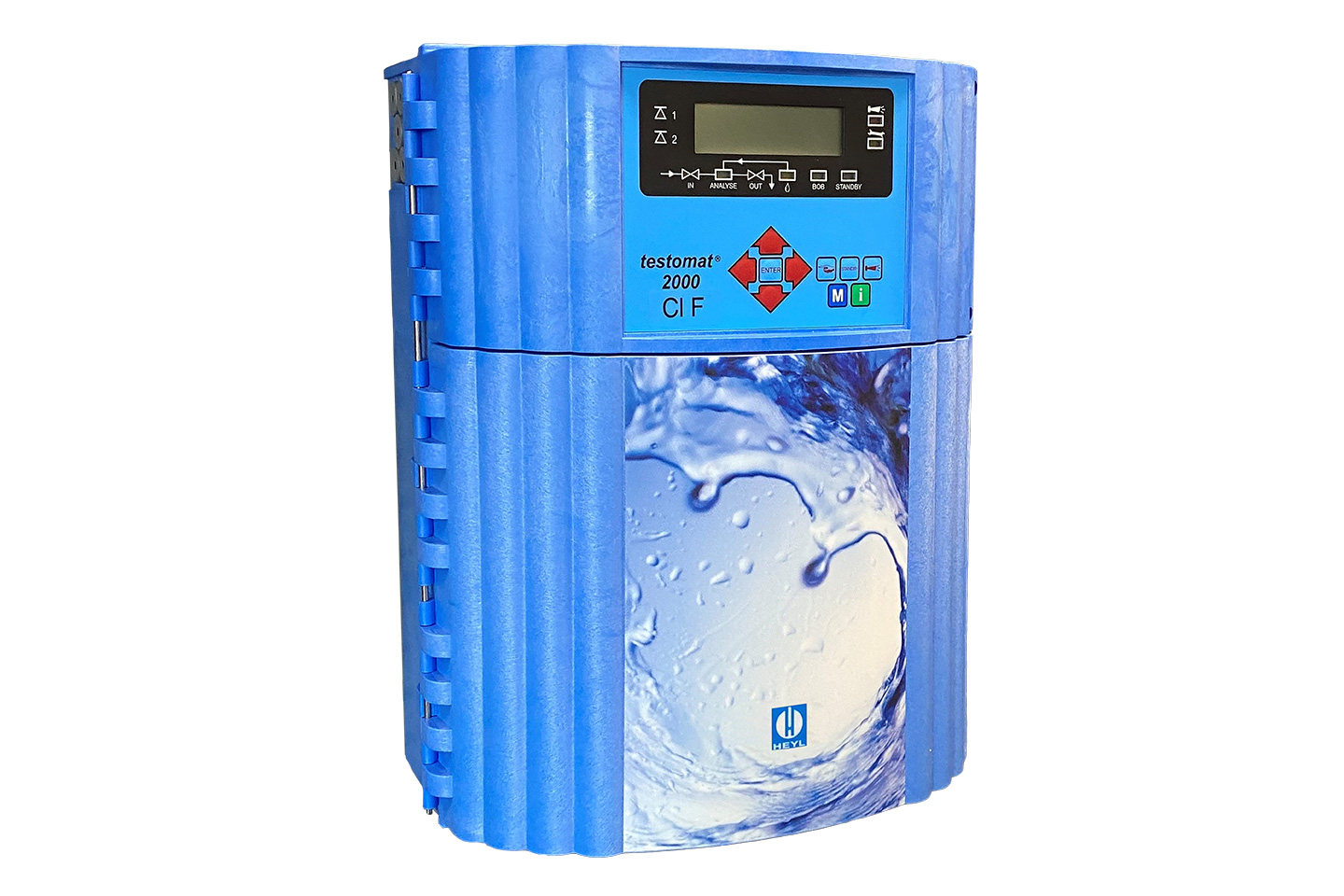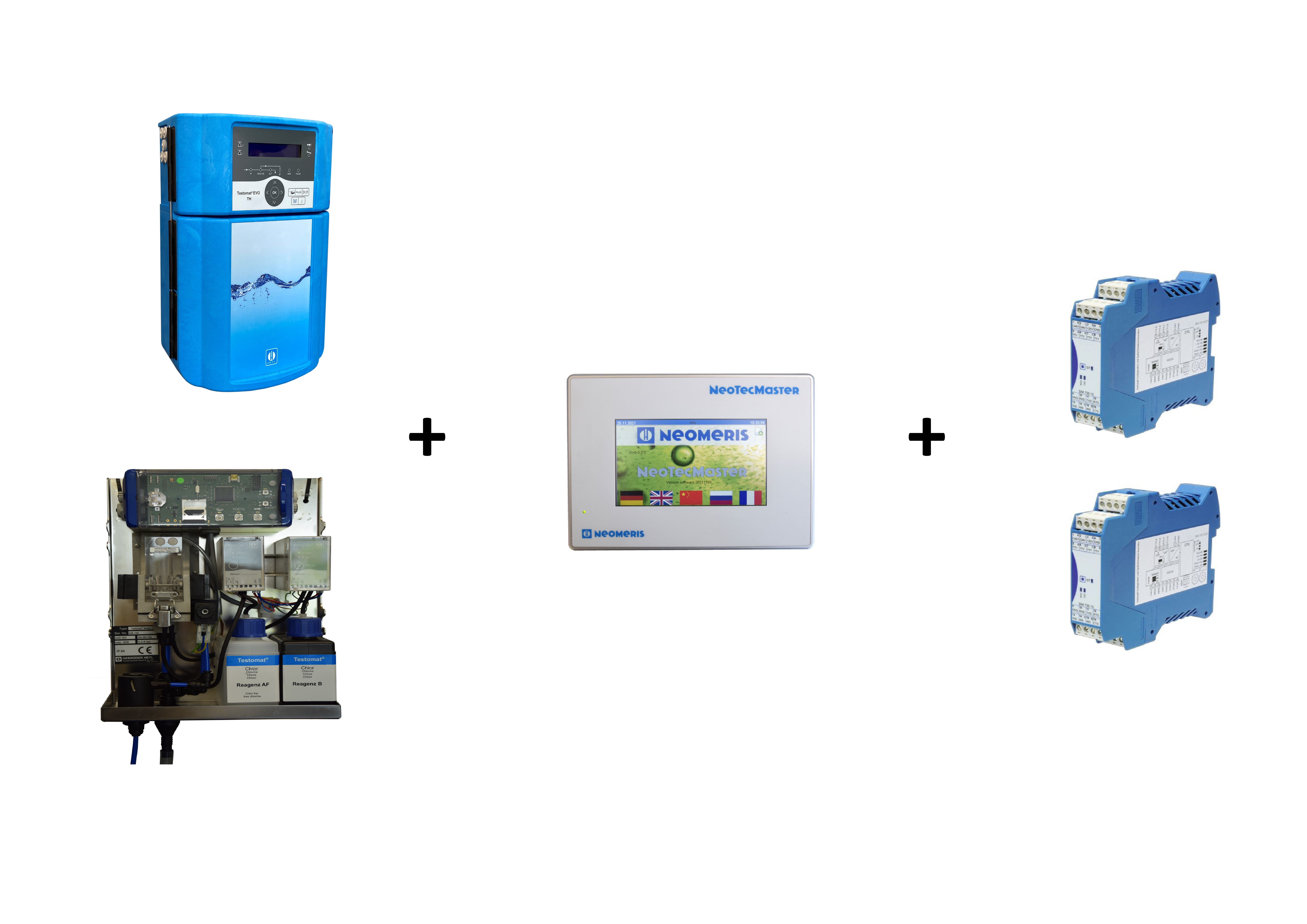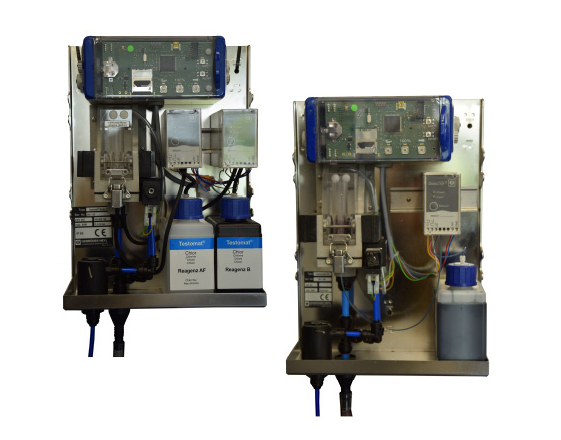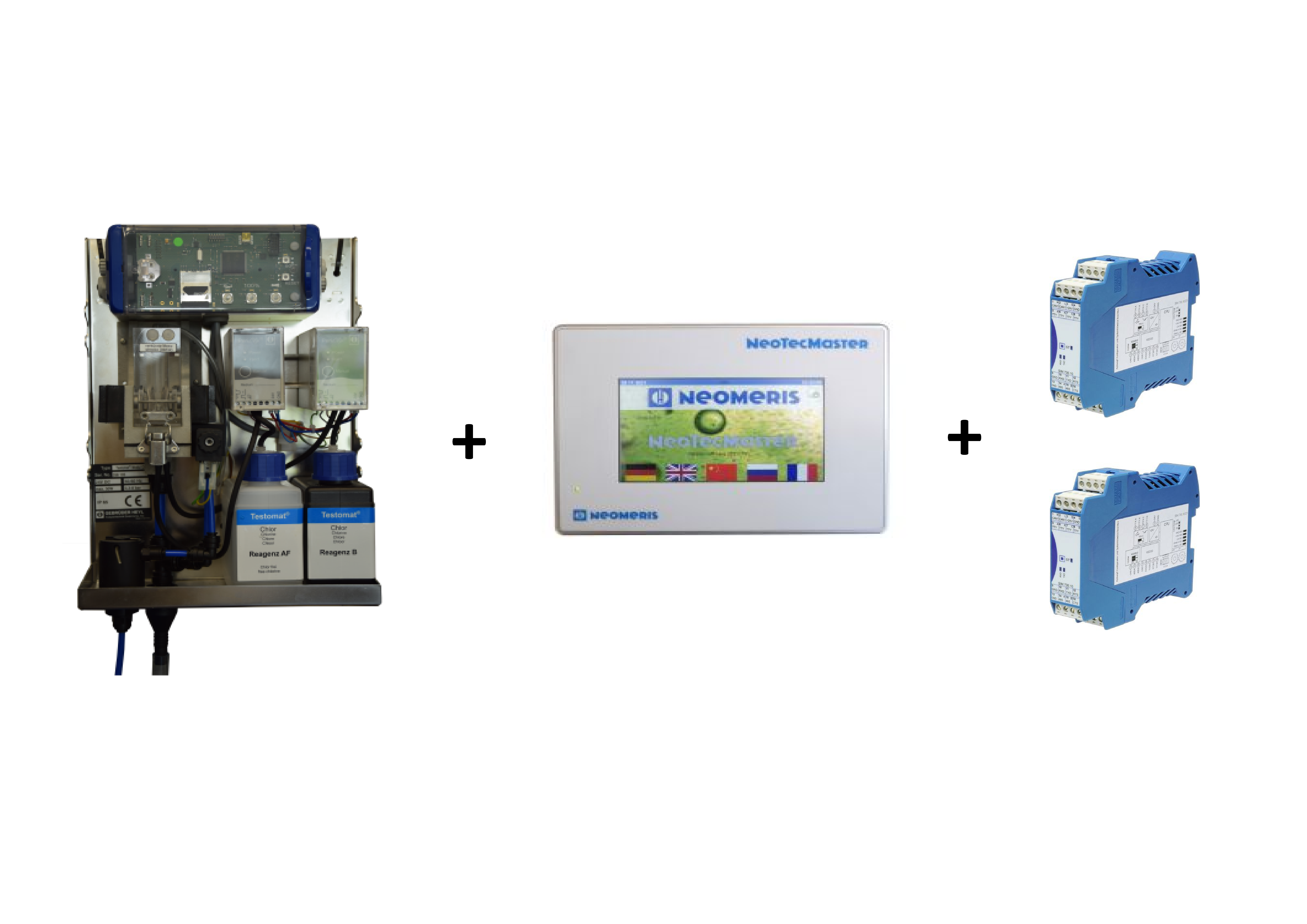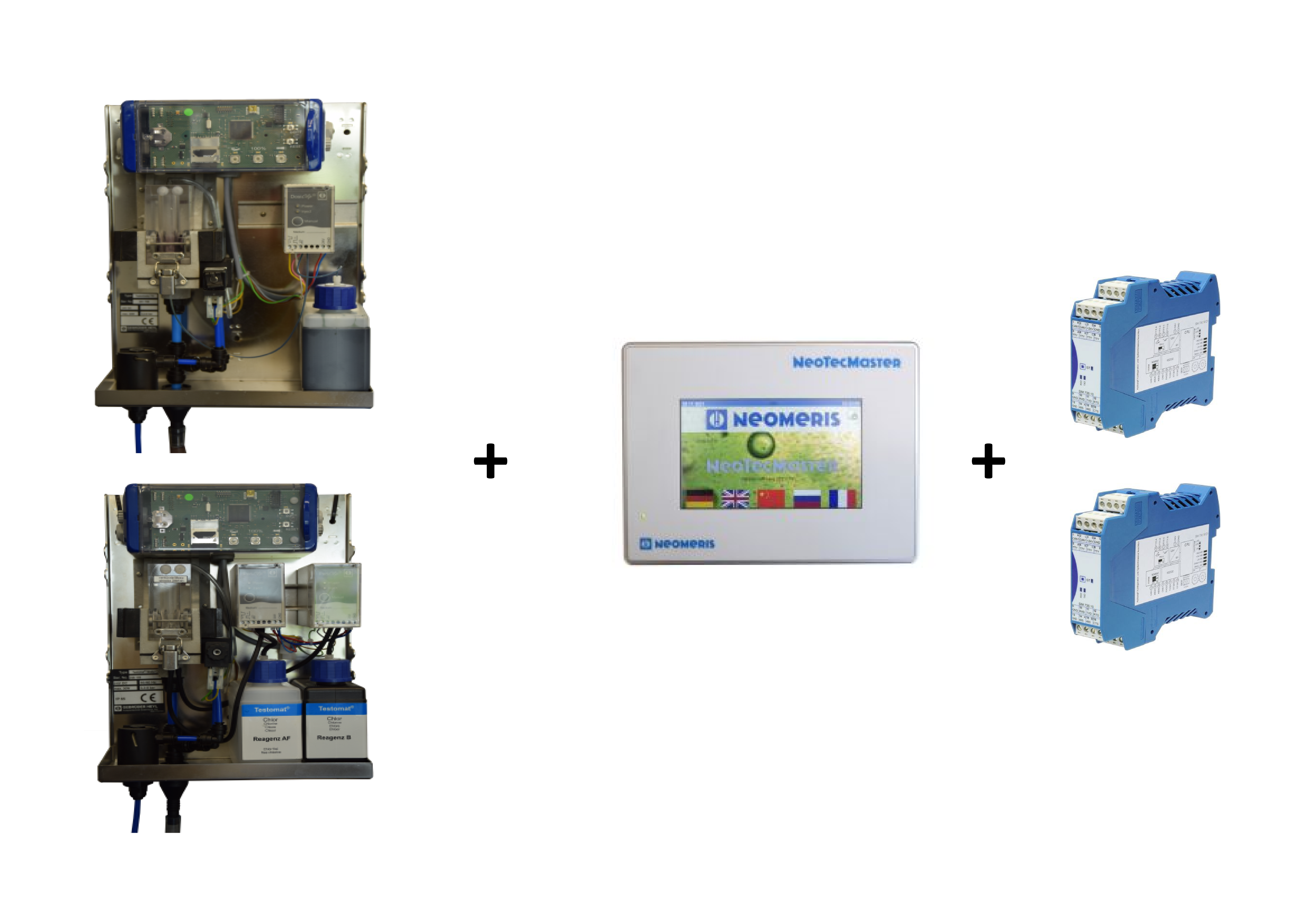Free chlorine refers to chlorine that is present as hypochlorous acid (HOCl) or the hypochlorite (OCl–) ion.
When the chlorine demand of water is satisfied, the remaining free chlorine is available to oxidize contaminants, which is measured by a Free Chlorine sensor.
Like all halogens, chlorine is a highly reactive element. In solution, chlorine can be found in many different molecular forms. When chlorine is added to water, it reacts with organic materials and metals, forming combined chlorine. Because combined chlorine is not available for disinfection, this effect is called the chlorine demand of the water.
-
Water Analyzers
- Devices
-
Parameters
- Water hardness (Ca2+ and Mg2+)
- Total hardness (TH)
- Carbonate hardness (KH)
- Acid capacity (pH 4.3, KS 4.3) and p-value (pH 8.2, KS 8.2)
- Base capacity (KB82)
- Bromine (Br)
-
Free Chlorine (HOCl)
- Total chlorine (CC)
- Chlorine dioxide (ClO2)
- Chromate & Chromium Cr(VI)
- Iron (II + III dissolved - Fe3O4)
- Silicate (SiO2 - dissolved)
- Ortho-Phosphat (P2O5)
- Polymere & Polyacrylate
- Monochloramine (NH2CL)
- TESTOMAT® - Accessories
- Spare Parts
- Service sets and maintenance cases
- Liquid chemistry
- Controls
- Electrodes and sensors
- Hand-held measuring instruments and analysis cases
- NeoTec World
- Clinical Solutions
- Blog
- Seminars & Webinars
- Ozone and UV technology
- Dosing pumps
- Gas Measuring Instruments
- Hygiene and Disinfection
- Water Meters
- Accessories
- OFFERS
Filter products





